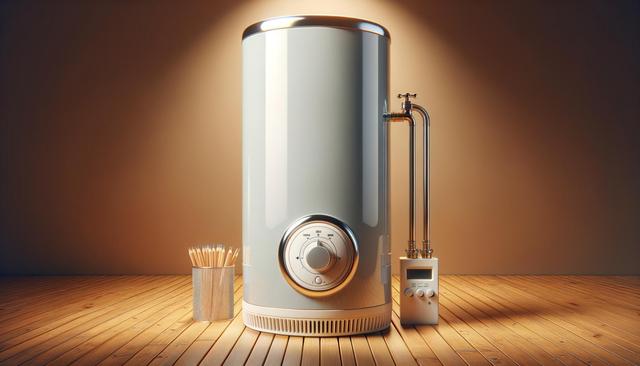Understanding Your Water Heater Options
When selecting a new water heater, it’s important to understand the different types available and how they align with your household needs. The two most common categories are storage tank water heaters and tankless water heaters. Storage tank models are traditional, using an insulated tank to hold heated water ready for use. Tankless systems, on the other hand, heat water on demand, offering a more compact and energy-efficient solution.
Each type has its merits. Storage tank water heaters are typically easier to install and may be more affordable upfront. Tankless models often come at a higher initial cost but can deliver long-term savings due to reduced energy consumption. Before deciding, consider the following:
- Household size and hot water usage patterns
- Available space for installation
- Energy source (electric, gas, solar)
- Budget for both purchase and ongoing energy costs
By matching your home’s specific needs with the right water heater type, you can ensure comfort and efficiency for years to come.
Energy Efficiency and Cost Considerations
Energy efficiency is a major factor when considering your next water heating system. Modern models are designed to deliver hot water while reducing energy waste. High-efficiency water heaters not only help the environment but can also lower utility bills over time. Look for models with high Energy Factor (EF) or Uniform Energy Factor (UEF) ratings, which indicate how effectively a unit converts energy into hot water.
In addition to efficiency ratings, consider the water heater’s recovery rate—this measures how quickly it can heat water after usage. A higher recovery rate means less waiting time between showers or other uses. Some advanced units also feature smart technologies, allowing you to monitor usage and adjust settings remotely.
Key benefits of energy-efficient water heaters include:
- Reduced monthly energy costs
- Lower carbon footprint
- Potential eligibility for energy rebates or tax credits
- Longer equipment lifespan with proper maintenance
Investing in a model that balances upfront cost with long-term savings can provide both financial and environmental rewards.
Installation Requirements and Maintenance
Proper installation is crucial for optimal performance and longevity of your water heater. Depending on the model—tank or tankless—installation requirements will vary. Tankless units typically require upgrades to plumbing or electrical systems, especially if you’re switching from a conventional storage tank model. It’s advisable to consult a licensed professional to ensure compliance with local building codes and safety standards.
Maintenance is equally important. Regular upkeep can extend the life of your system and maintain its efficiency. Common maintenance tasks include:
- Flushing the tank annually to remove sediment buildup
- Checking the anode rod to prevent corrosion
- Inspecting for leaks or signs of wear
- Testing the pressure relief valve
Tankless models also require periodic descaling, especially in areas with hard water. Scheduled checks and timely repairs can help avoid costly breakdowns and ensure a consistent hot water supply.
Choosing the Right Capacity
Selecting the appropriate capacity is essential to meet your household’s hot water demands without overspending on energy. For storage tank water heaters, capacity is measured in gallons. A family of four, for example, might require a 50-gallon tank. In contrast, tankless models are rated by their flow rate, typically measured in gallons per minute (GPM).
To determine the right size, consider simultaneous usage. For instance, running a dishwasher and taking a shower at the same time may require a higher GPM in a tankless system. For storage tanks, think of the peak time usage during the day and ensure the tank can handle that demand.
Here’s how typical household needs align with capacity:
- 1-2 people: 30–40 gallons (storage) or 2–3 GPM (tankless)
- 3-4 people: 40–50 gallons (storage) or 4–5 GPM (tankless)
- 5+ people: 50–80 gallons (storage) or 6+ GPM (tankless)
Choosing the right capacity ensures you won’t run out of hot water while avoiding unnecessary energy use.
Advanced Features and Technology
Modern water heaters come equipped with innovative features that enhance user convenience and efficiency. Some models offer smart thermostats, Wi-Fi connectivity, and mobile app integration that allow homeowners to monitor energy use, set schedules, and receive maintenance alerts. These features are especially useful for managing energy consumption and improving usability.
Another innovation includes hybrid heat pump water heaters, which combine traditional electric heating with heat pump technology. These models are known for their efficient operation and are ideal for households seeking more sustainable options. Additionally, solar water heaters are gaining traction in sunny climates, using renewable energy to reduce heating costs significantly.
Some notable advanced features to consider include:
- Digital displays for temperature control and diagnostics
- Energy-saving modes or vacation settings
- Leak detection sensors with automatic shut-off
- Built-in recirculation pumps for faster hot water delivery
While these features may increase the initial cost, they offer ongoing benefits that make them a worthwhile investment, particularly for tech-savvy homeowners or those focused on energy efficiency.
Making a Smart Investment in Home Comfort
Choosing the right water heater is about more than just hot showers—it’s an investment in your home’s comfort, efficiency, and long-term cost savings. By understanding the types of water heaters, evaluating your household’s specific needs, and considering energy efficiency and modern features, you can make an informed decision that aligns with your priorities.
Whether you’re replacing an outdated unit or installing a system in a new home, take the time to compare options, consult professionals, and plan for proper maintenance. A well-chosen water heating system not only prevents the inconvenience of cold water but also contributes to a more energy-conscious and comfortable lifestyle.




Leave a Reply